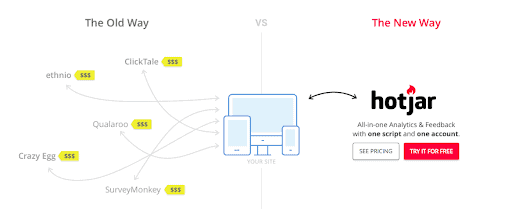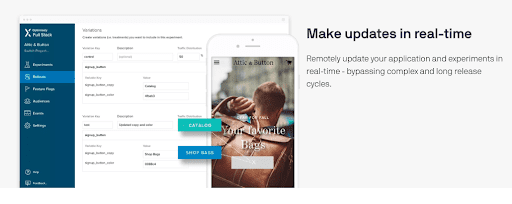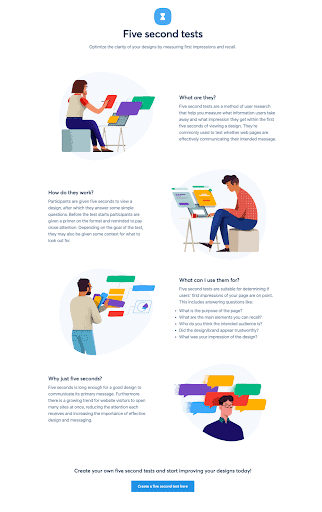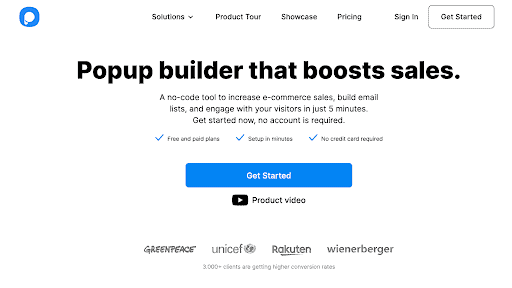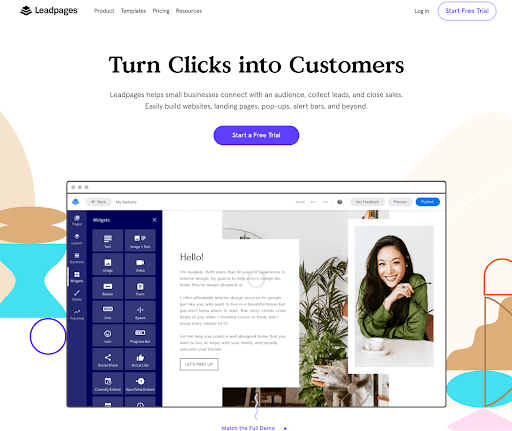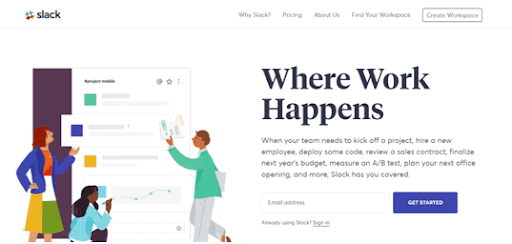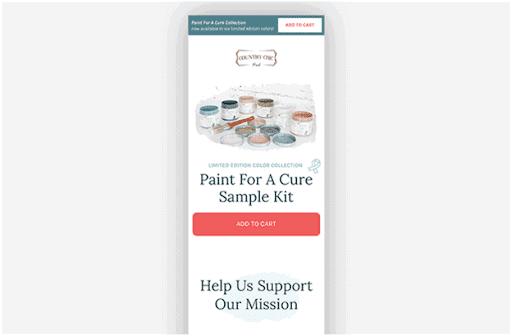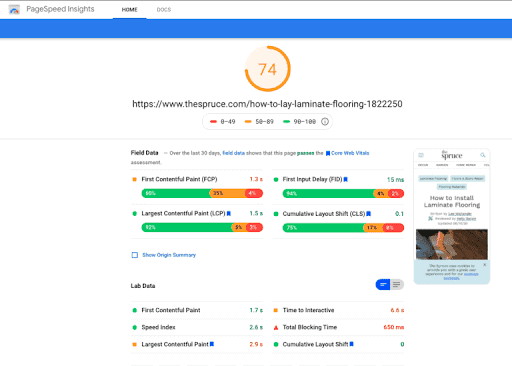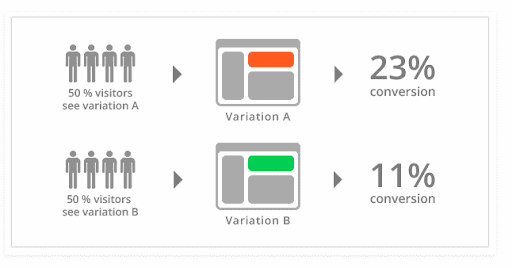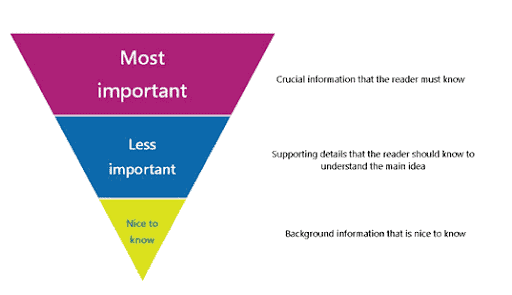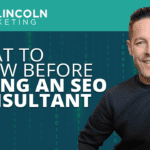Landing Page Best Practices: Strategies, Tools, and More
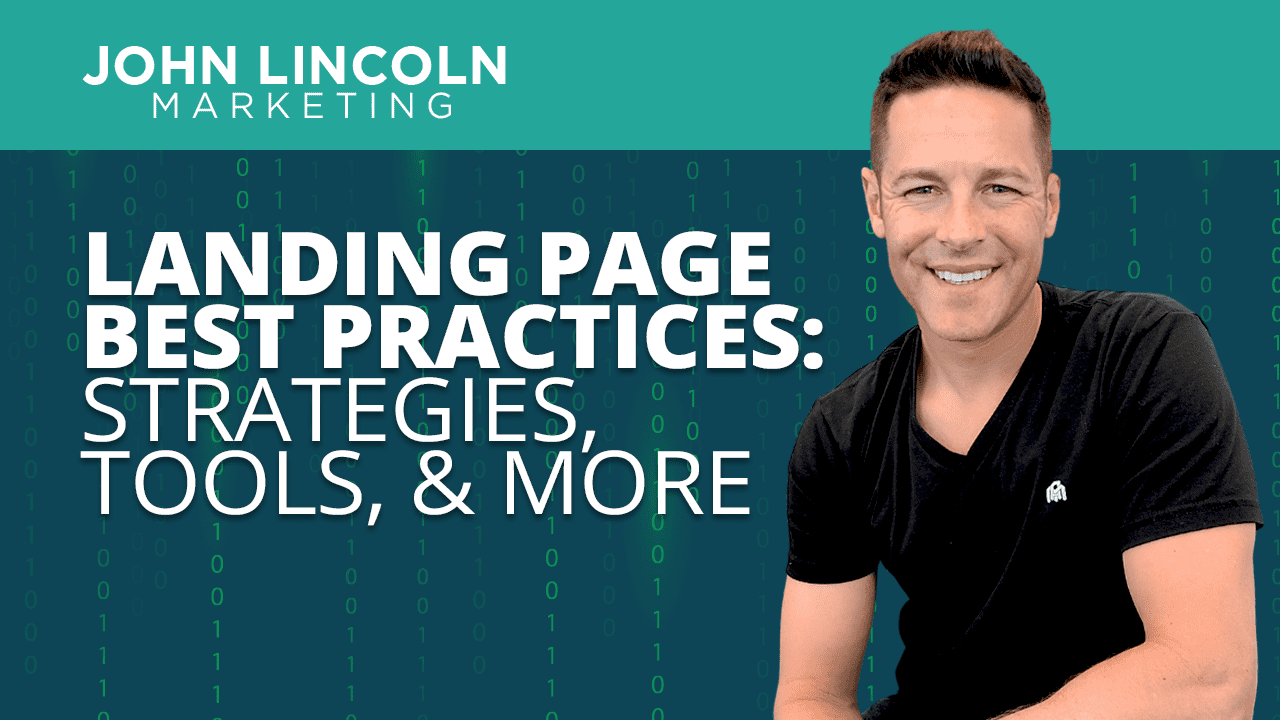
To help you meet your goals for the coming year, we’ve put together a list of tried and tested tactics to turn your landing page into a lead generation machine.
Let’s get converting!
What is a Landing Page?
In digital marketing, a landing page is a standalone web page that you land on after clicking a link in a paid ad or email. It’s where persuasive copy, solid design, and clever branding come together to drive visitors to convert.
Landing pages will often offer free trials, ebooks, white papers, or webinar registrations in exchange for a person’s contact information.
Not only is this a great way to drive traffic and strengthen your brand, but it provides visitors with easy, direct access to the product or service they’re interested in.
However, since there are so many moving parts, creating a landing page from scratch can seem daunting. What should you focus on? What should you disregard? We’ll explain it all!
Landing Page Optimization Strategy
Optimizing your landing page is vital for several reasons but first, let’s talk about what optimizing a landing page means.
What is Landing Page Optimization?
Landing page optimization is when you improve your landing page to increase conversions. Think of it as a fight against super high bounce rates.
If your PPC campaigns work, they will send traffic to your landing page. But if they’re bouncing off your page, something about it isn’t working.
This is where optimization comes in.
You want to tweak your page to do what it’s supposed to do: increase your ROI and lower your bounce rate. As you test various ideas, this will take a little of trial and error.
Why Optimizing Your Landing Page is Important
Many people think that getting traffic to your page is the hard part. However, most of your work starts once they click on your landing page.
The good news is that an optimized landing page will do a lot of the heavy lifting for you. But for it to do its job, it has to be optimized for your audience and offer.
Your landing page should be a clear link between interest and purchase. If your landing page is too confusing or cluttered, chances are that your audience will click right off.
Instead, when you keep your landing page clean and clear, your audience will know exactly what next step to take.
In the event of long-term campaigns, optimization will include SEO work. For example, optimizing your landing page will ensure that you continue to reach your target audience even if you aren’t currently running targeted ads.
In short, landing page optimization is important to help you achieve a higher conversion rate and a lower bounce rate.
How to Identify Landing Page Problems Before Starting
To optimize your landing page correctly, you’ll need to research beforehand. This will help you identify what your audience is looking for and how to serve them better.
Some ways of doing this include installing a heat map to see where people are clicking on your current page. You can also use a scroll map to visually see where people spend their time and where they skip through.
Identifying your potential problems before you start the optimization process will save you time and energy.
Landing Page Optimization Process
When you optimize your landing page, you need to identify your problem areas. Use the processes above to identify the areas of your page that need work.
You also need to identify your business objectives, clearly understand what you need this page to do, know your audience and their technical limitations, and identify your primary call to action.
You also need to look at the mistakes you’ve made in the past. This will ensure that you don’t repeat them. Also, study what has worked before to see if you could replicate those things in this new campaign.
Once you know what needs to be improved, it’s time to get to work. Keep your work streamlined by incorporating a checklist. This will also help you develop better habits and make your landing page optimization process go more smoothly in the future.
Before your page goes live, have as many eyes look at it as possible. Ask them about the user experience and have them point out any typos or design flaws.
When your page goes live, it’s all about testing! Use A/B testing, change out imagery and messaging, and things like button colors to see what your audience resonates with.
Don’t forget to optimize your call to action! What may seem simple to you may not work for your audience. Keep notes on what calls to action drive your audience toward conversions more.
One of the most important parts of landing page optimization is keeping track of your performance metrics. Review your metrics often and make tweaks when necessary. Note what you’re changing and why, so you can refer to it in the future.
Landing Page Optimization Tools
While following these landing page best practices is critical to your marketing success, they’re only one-half of the conversion equation. You need to take it one step further and optimize your landing page. Luckily, there are many cost-effective tools that can help you with this process.
Hotjar
Over 350,000 organizations from 180+ countries use Hotjar to learn more about how visitors interact with their landing pages. The tool also offers real-time recordings of customer visits to show where they’re spending the most time.
Optimizely
From segmentation to AI-powered personalization, Optimizely is one of the best tools on this list for helping you get the most out of every campaign. Currently, there are more than 20 Fortune 100 companies that have chosen Optimizely to scale their experimentation programs.
Instapage
Aside from being a landing page optimization tool, Instapage lets you create landing pages from scratch. It offers a full suite of features such as built-in heatmaps, robust analytics, and A/B testing.
Crazy Egg
300,000 websites use Crazy Egg to analyze visitor behavior, identify gaps in the buyer journey, and test web pages. This landing page optimization tool is best for smaller ecommerce businesses and digital agencies.
Google Analytics
A fan favorite, Google Analytics is a great tool if you want to evaluate your site’s performance and determine which changes have been effective. For example, discover which pages visitors land on the most, how much time they spend there on average, and how many new visitors you attract.
Five Second Test
Five Second Tests is a super affordable landing page optimization tool. For a small fee, you can submit a page to be reviewed by a group of participants. These participants are given five seconds to view a design. After they view it, they then answer questions about the page.
This test aims to give designers an idea of whether their design is communicating well. Since most visitors will only view a landing page for a few seconds before they decide to read further, your design is incredibly important.
Popupsmart
Popupsmart is a way to add pop-ups to your page to promote offers, reduce cart abandonment, collect feedback, and grow your email list. Some people use it to make views stop and focus on their landing page for longer periods of time.
This tool has free options, as well as a subscription plan if you want to use it for landing page optimization often.
LeadPages
Our final landing page optimization tool is LeadPages. Used often by small businesses, this platform is an easy way to create landing pages, popups, alert bars, and websites.
They also offer analytics and suggestions on how to optimize your page. Their plans are affordable, but the platform can be limited when it comes to extracting data from your site.
Landing Pages: Best Practices
While this is not an exhaustive list, these are the top 15 must-follow landing page best practices you should consider when putting together your optimization strategy for 2022.
Keep Your Forms Simple
Forms are often tedious to fill out. In addition, if there are many fields and dropdown boxes, it may turn leads off of your landing pages.
With forms, less is more. As long as you reduce the resistance a prospect will encounter, the easier it is for them to opt-in to your conversion.
Craft Compelling Copy
There’s an excess of dry and dull copy on the internet. When writing copy for landing pages, you want to avoid overused phrases like “sign up” and “learn more.” Instead, you want to pull the reader in.
And today’s readers aren’t interested in marketing copy that‘s salesy or self-important. Instead, make it conversational, skimmable, and personalized so they’ll have no choice but to engage with you.
Write Benefit-Focused Headlines
If you want to boost the impact of your marketing messages, don’t just describe the features—talk about the benefits. Again, your headline is the best place to do that.
Your visitors need to know what’s in it for them within the first few seconds of arriving on your landing page. At the end of the day, 80% of your visitors will read your headline and only 20% will even bother reading the rest. That’s why I recommend spending more time on your headline than the rest of your page.
Minimize Distractions
Unlike your website’s homepage, where users can take a wide variety of actions, a high-converting landing page typically has an attention ratio of 1:1. Simply put, it should only include what you want your visitors to do.
Everything else that doesn’t encourage them to take the intended action is a distraction. If you want their undivided attention, use no social shares buttons, no navigation bars, and no footers on your landing pages.
Include a Strong Call-to-Action (CTA)
This is one of the most important landing page best practices out there. Without a clear CTA, your visitors won’t know what to do next and will soon leave.
Make sure your CTA is displayed at least once somewhere on the page in a visually distinct and obvious way. Avoid making people guess what they should click on.
Build Credibility with Testimonials
In order to create a lasting impression on your audience, don’t underestimate the role of testimonials in winning their trust.
When they see that other people have found their products or services valuable, they will feel confident buying from you. In fact, according to recent studies, nearly 80% of consumers say that they trust online reviews as much as personal recommendations.
Make Your Keywords Count
Putting your keywords in the right places on your landing page is a great way to optimize it for SEO.
Wherever possible, the target keywords should be placed in your headers, body text, page title, URL, and meta description.
You have a better chance of improving your rankings by including your keywords in the areas where Google is looking.
Use Mobile-Friendly Design Elements
Today, 68.1% of global website visits come from mobile devices.
And since mobile landing pages have less screen real estate than desktop, your landing page design should be mobile-optimized.
This means cutting the fluff—removing redundant words, shortening your sentences, and leaving space for a compelling graphic.
Choose Your Visuals Wisely
Since people process images quicker than text, visuals can set the tone for the entire user experience.
Leave a lasting impression by choosing the right images and videos for your landing page—ones that add value and apply to your brand.
Ask yourself—Does the graphic enhance the content in any way? Will visitors learn anything from it?
Improve Page Load Speed
Visitors are pretty picky about page speed. So, if your landing page doesn’t load lightning-fast, your prospects won’t think twice about going elsewhere.
The slower your load time, the higher your bounce rate. To speed up the process, you can eliminate unnecessary JavaScript and remove images with enormous file sizes.
Test, Test, Test
While A/B testing has become more popular over the years, there are a ton of misconceptions that still surround this strategy.
It’s not just for testing button colors and images but for identifying the highest-performing version of your page.
Sometimes, this involves testing a drastically different landing page design against another to find out what works best.
Create a Thank You Page
In digital advertising, a little “thank you” can go a long way. One way to do that is by showing genuine gratitude for someone who just converted. Thank-you pages are ideal for this.
After completing a form or making a purchase on your landing page, the “Thank-You” page acts similarly to a confirmation email—except visitors don’t have to choose to open it.
Think of it as the last step in the conversion process and the first step in turning your lead into a brand advocate.
Keep the Important Pieces Above the Fold
The most effective landing pages waste no time in getting to the point. To ensure the most crucial information is at the top, refer to the inverted pyramid technique.
This is typically comprised of the header, text, imagery, or video that users see before they have to scroll.
Prompt Action with Urgency
There’s a reason why “limited-time offer” and “we’re running out” are common marketing phrases. By creating a time or resources scarcity, you can gently nudge your visitors to take action on your website faster than they would have originally.
But, these need to be actual offers. You don’t want to promote a deal that doesn’t exist, as doing so can be detrimental to your brand.
Remove Your Navigation Menu
Your landing pages have a clear objective and you don’t want people straying to other parts of your site.
By removing the header navigation from your landing pages, users will be fully engaged and ready to focus on the task at hand.
Let Visitors Share Your Page
One really good way to get the word out about your brand or product is to let your audience do the sharing for you. Enable a quick share button so that visitors can easily share your page on their social media networks, such as Facebook or Twitter.
Include a Phone Number
This one may seem silly, but people feel comforted by phone numbers. Even if they never call, they want to know that they have the option to call and speak to a real person. It legitimizes your offer and offers an option for people who want your offer but don’t like to purchase online.
Stay Consistent
One of the best ways to build your brand online is to make sure everything is consistent across the board. This includes your landing pages. Use the same font, colors, messaging tone, and graphics to let your audience know who you are.
Incorporate SEO
Sometimes landing pages are for quick events or passing promotions. But other times, they will be live for a long time. Increase the amount of traffic your landing page receives by incorporating on and off-page SEO tactics.
Be Truthful
You may be tempted to exaggerate a bit, but don’t! People value trustworthy brands. A slow and steady climb to the top is much more sustainable than a random burst of sales.
Final Thoughts on Landing Pages
Remember—your landing page can make or break your sales funnel.
And whether it’s irrelevant copy or a poor design, there are plenty of pitfalls to avoid along the way.
By implementing these landing page best practices, you’ll be able to successfully attract more leads and convert more customers in 2022 and beyond.
If you’re aiming for higher conversion rates, implementing these best practices will help make your landing pages more engaging.
FAQs About Landing Page Optimization
- What is landing page optimization?
Landing page optimization is when you improve your landing page for the sake of increasing conversions. It is a subset of conversion rate optimization or CRO. Its goal is to decrease your bounce rate and increase your conversion rate.
- Why is landing page optimization important?
Landing page optimization is super important because it is directly tied to your bottom line. All the work in the world won’t matter if your landing page isn’t turning your clicks into conversions. Frequently updating your landing page to better speak to your audience will only be helpful to your brand.
- Is landing page optimization a one-time process?
Nope. Landing page optimization should be repeated as often as your metrics deem necessary. The goal of your landing page is to speak to your audience and sometimes, what they want to hear changes. It is your job to make sure that your landing page is optimized for user experience while delivering the content that they are looking for. When your content resonates with them, your landing page will be more successful.
Welcome To John Lincoln Marketing
Welcome to John Lincoln’s personal website. You can learn about John Lincoln’s books, films, book him to speak and contact him. John is directly associated with many of the businesses mentioned on this website and freely discloses this information.
About the Author

John Lincoln is CEO of Ignite Visibility, one of the top digital marketing agencies in the nation. Ignite Visibility is a 6x Inc. 5,000 company. Ignite Visibility offers a unique digital marketing program tied directly to ROI with a focus on using SEO, social media, paid media, CRO, email and PR to achieve results. Outside of Ignite Visibility, Lincoln is a frequent speaker and author of the books Advolution, Digital Influencer and The Forecaster Method. Lincoln is consistently named one of the top digital marketers in the industry and was the recipient of the coveted Search Engine Land “Search Marketer of The Year” award. Lincoln has taught digital marketing and Web Analytics at the University of California San Diego since 2010, has been named as one of San Diego’s most admired CEO’s and a top business leader under 40. Lincoln has also made “SEO: The Movie” and “Social Media Marketing: The Movie.” His business mission is to help others through digital marketing.
Get Social
Contact John Lincoln
Want to get in touch with John Lincoln? Click Here To Reach Out.
Related Posts
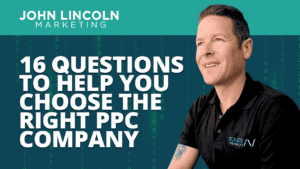
Top 16 Questions to Ask a PPC Company in 2024
In 2024, choosing the right PPC company is not just about spending your advertising budget. You want to make every cent count towards your business

The Ultimate Guide to Conversion Rate Optimization for Any Business
Whether you’re a seasoned marketer or just starting out, conversion rate optimization (CRO) is a powerful tool that can boost your sales, leads, and overall

16 Questions to Help You Choose an SEO Company
Feeling overwhelmed by the sea of SEO companies out there? You’re not alone! Choosing the right partner is crucial for achieving your online marketing
